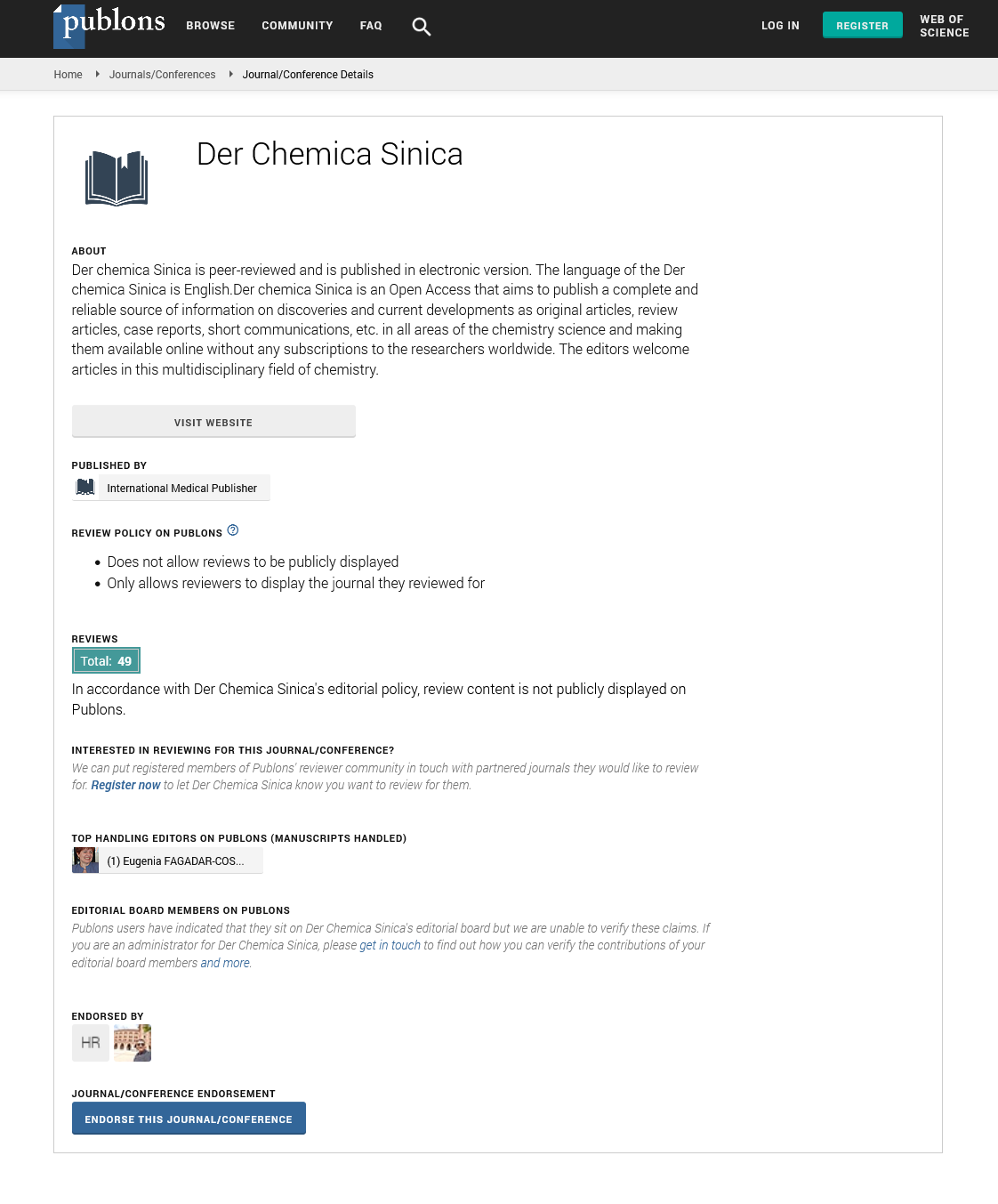ISSN : 0976-8505
Der Chemica Sinica
Abstract
3D-QSAR Pharmacophore-based Ligand Alignment, Virtual Screening and Molecular Docking of Arylidene (Benzimidazol-1-yl)acetohydrazones as Biomimetics of Bacterial Inhibitors
The arylidene (1H-benzimidazol-1-yl) acetohydrazone derivatives were previously designed, synthesized, structurally determined and their antibacterial activity was evaluated against Rhizobium radiobacter. The minimum inhibitory concentration (MIC) result demonstrated that salicylaldehyde(1H-benzimidazol-1-yl)acetohydrazone (4) was the most active compound (MIC=15 mg/L). The mapping of pharmacophores based on 3D structure, docking on protein, proteinligand interaction and energy of binding were accomplished to identify the interaction between compounds and active sites of the supposed targets. A pharmacophore generated by using the HypoGen 3D-QSAR pharmacophore-based ligand alignment in Discovery Studio 2.5 software produced an accurate predictive model of antibacterial activity of the acetohydrazone derivatives. The validity of the pharmacophore model extends to structurally different class of compounds that could open new frontiers for study. The best pharmacophore in terms of statistics and predictive value consisted of four characteristics included two hydrogen bond acceptors (HA), a hydrophobic characteristic (HY) and an aromatic characteristic (AR). The selected pharmacophore hypothesis yielded an RMSD of 0.44 and a correlation coefficient of 0.91 with a cost difference (null cost minus total cost) of about 45. Molecular docking using MOE software was performed on the best five target proteins include cystathionine beta-synthase, ribonucleosidediphosphatereductase 2-subunit alpha, aspartate aminotransferase, glutamate decarboxylase beta, and 3-hydroxy- 3-methylglutaryl-coenzyme Areductase. The results revealed a significant correlation between the binding score and biological activity for these compounds to describe the molecular basis for the structure-activity relationship results.
Author(s): El Sayed H El Ashry, Mohamed E I Badawy, Yeldez El-kilany, Nariman M Nahas, Mariam A Al-Ghamdi
Abstract | Full-Text | PDF
Share This Article
Google Scholar citation report
Citations : 6019
Der Chemica Sinica received 6019 citations as per Google Scholar report
Der Chemica Sinica peer review process verified at publons
Abstracted/Indexed in
- Google Scholar
- Open J Gate
- Genamics JournalSeek
- China National Knowledge Infrastructure (CNKI)
- Directory of Research Journal Indexing (DRJI)
- Publons
- MIAR
- International Committee of Medical Journal Editors (ICMJE)
- Serials Union Catalogue (SUNCAT)
- Geneva Foundation for Medical Education and Research
- Secret Search Engine Labs
- Euro Pub
- CAS (Chemical Abstracting Services)
- University of Barcelona
Open Access Journals
- Aquaculture & Veterinary Science
- Chemistry & Chemical Sciences
- Clinical Sciences
- Engineering
- General Science
- Genetics & Molecular Biology
- Health Care & Nursing
- Immunology & Microbiology
- Materials Science
- Mathematics & Physics
- Medical Sciences
- Neurology & Psychiatry
- Oncology & Cancer Science
- Pharmaceutical Sciences
